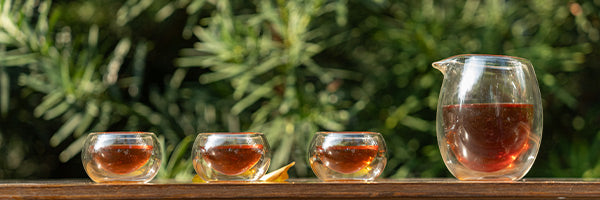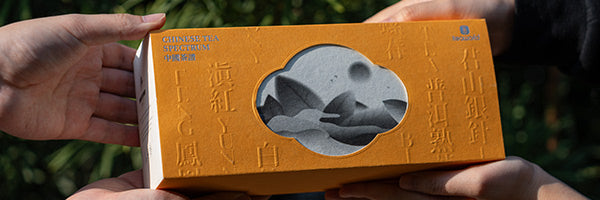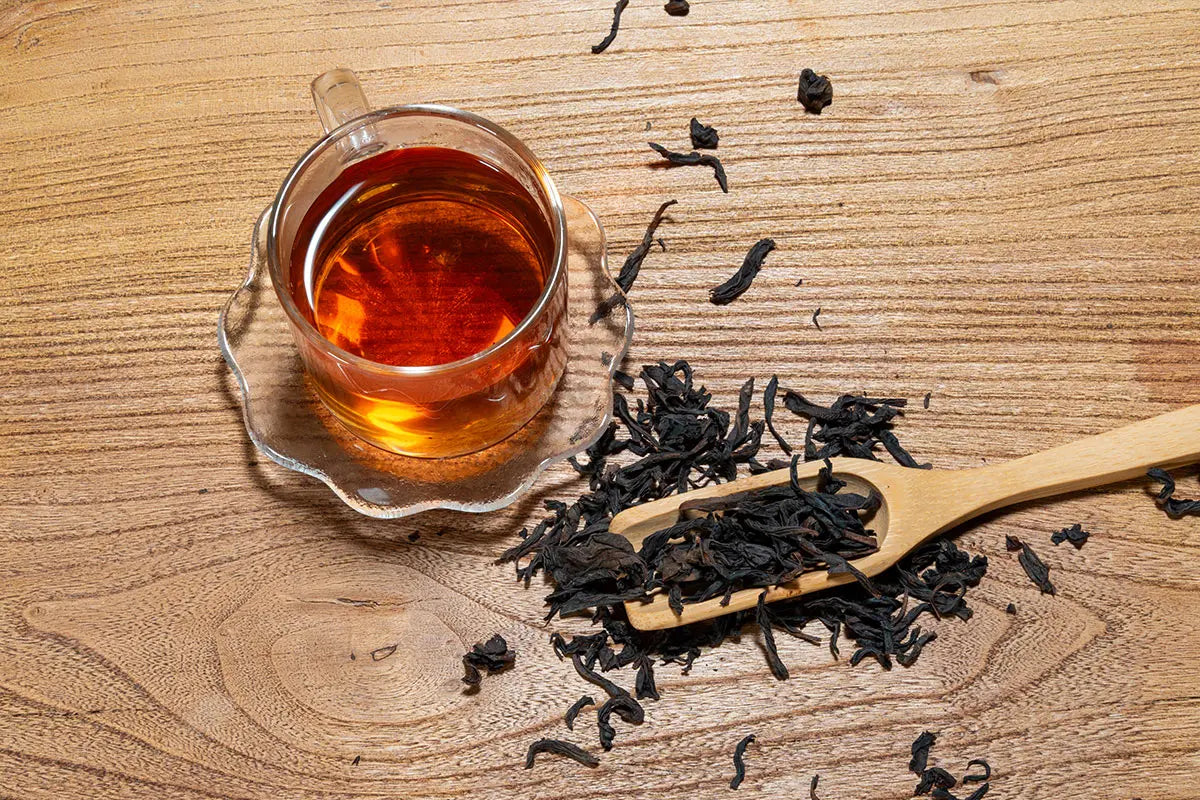Если вам нравится пить чай Да Хун Пао, лучше всего покупать его и употреблять по мере необходимости. Однако в жизни могут возникнуть ситуации, когда вам понадобится хранить чай Да Хун Пао, и тогда необходимо будет понять некоторые методы его сохранения.
О Да Хун Пао
Чай Да Хун Пао произрастает на горе Уи в провинции Фуцзянь, Китай, и славится своим превосходным качеством. Он сочетает в себе ароматные характеристики зеленого чая с богатой сладостью черного чая, что делает его исключительным сортом среди китайских улунов и одним из лучших листовых чаев . Да Хун Пао был признан выдающимся чаем из скалы Уи со времен поздней династии Мин и ранней династии Цин.

Листья чая Да Хун Пао имеют плотно скрученный вид и свежий зеленовато-коричневый цвет. Он имеет уникальный орхидейный аромат, который сохраняется, а чайный ликер ярко-оранжево-желтый с чередующимися красными и зелеными листьями. Чай Да Хун Пао устойчив к многократным завариваниям, сохраняя свой аромат даже после семи или восьми завариваний. Более качественный Да Хун Пао может выдерживать большее количество заварок. На рынке доступны различные виды Да Хун Пао с различным качеством. Рекомендуется попробовать чайный сэмплер и отличить, купив небольшое количество чая, чтобы найти высококачественный Да Хун Пао, который соответствует вашим предпочтениям.
Современные научные исследования, как отечественные, так и международные, подтвердили, что Да Хун Пао не только обладает общими полезными свойствами с другими чаями, такими как освежение ума, снятие усталости, стимулирование диуреза, снижение жара, профилактика инфекций, детоксикация, помощь пищеварению и содействие снижению веса, но и проявляет особые эффекты, такие как противораковые свойства, снижение уровня липидов в крови, омоложение и многое другое. Да Хун Пао — это не только полезный для здоровья, но и вкусный выбор, что делает его идеальным подарком на Рождество или Новый год для семьи и друзей.
Методы хранения Да Хун Пао
1. Использование дегидратора
Хранение чая в дегидраторе эффективно, поскольку он поддерживает стабильную температуру и изолирует чай от воздуха, предотвращая его отсыревание или окисление.
2. Использование термоса для хранения
Очистите и подготовьте термос, затем насыпьте в него чайные листья и плотно закройте крышкой для хранения.
3. Выбор варианта хранения в канистре
Разделите небольшое количество чайных листьев на меньшие банки для удобства доступа, а оставшиеся чайные листья храните в большей герметичной банке. Рекомендуется избегать использования стеклянных банок, керамических банок, деревянных ящиков или медицинских банок, поскольку они могут иметь такие недостатки, как светопрозрачность, отсутствие влагостойкости и хрупкость.
Подходящими материалами для канистр являются олово или железо. Оловянные или железные канистры предотвращают проникновение света и идеально подходят для этой цели. Кроме того, рекомендуется использовать двухслойную крышку. Перед упаковкой поместите слой впитывающей бумаги или пергамента внутрь канистры и заклейте все щели в крышке лентой. Кроме того, вы можете добавить осушитель для повышения влагостойкости.
Фаньцин Да Хун Пао
Любители чая, которые часто наслаждаются Да Хун Пао, могут заметить явление, известное как «Фаньцин» (повторное озеленение). Когда они впервые начинают пить его, чай демонстрирует превосходные качества, но после хранения в течение некоторого времени и повторного использования они могут заметить ухудшение его состояния. Аромат слабеет, становится более сложным, теряет ясность, а во вкусе появляются нежелательные элементы, такие как горечь, зеленоватый привкус или кислотность. Первоначальный вкус и отличительные характеристики чая кажутся ослабленными. Подводя итог, эти симптомы можно отнести к чаю, прошедшему «Фаньцин» или повторное озеленение.
Листовой чай , который в процессе обработки подвергается обжарке, такой как Да Хун Пао и Лапсанг Сушонг , подвержен этому явлению. 
Повторное позеленение Да Хун Пао происходит, когда чайные листья впитывают влагу, что приводит к зеленому и терпкому вкусу. Для этого есть две основные причины.
С одной стороны, условия хранения Да Хун Пао могут быть неблагоприятными, что приводит к впитыванию влаги чайными листьями.
С другой стороны, это связано со степенью обжарки, которой подвергается Да Хун Пао. Различные производственные процессы приводят к разным уровням обжарки Да Хун Пао. Те, которые имеют более легкую обжарку, сохраняют относительно более высокое содержание влаги и более активные компоненты. В процессе хранения внутренняя влага слабо обжаренного Да Хун Пао медленно просачивается на поверхность, заставляя чайные листья впитывать влагу и подвергаться повторной зелени.
Во время хранения Да Хун Пао повторная озеленка является существенным изменением, но это не единственное. На самом деле, есть и другие изменения, которые могут повлиять на качество Да Хун Пао. Поэтому правильное хранение Да Хун Пао имеет решающее значение для сохранения его качества."
Как спасти «Фаньцина» Да Хун Пао?
Феномен «Фаньцин» (повторного позеленения) в Да Хун Пао может иметь различную степень влияния на его съедобность, но есть способы решения этой проблемы. В настоящее время единственный метод работы с Да Хун Пао, который подвергся «Фаньцин», — это пройти процесс, называемый Фубэй, или повторная обжарка. Если другой листовой улун или листовой черный чай с процессами обжарки испытывает феномен «Фаньцин», их также можно спасти аналогичным образом.Повторную обжарку следует проводить при низких температурах и медленно, чтобы в первую очередь удалить влагу. Чрезмерная температура обжарки может привести к другой форме трансформации чайных листьев. Для тех, кто предпочитает чай с более высокой степенью обжарки, можно внести корректировки в температуру повторной обжарки, но это также повлияет на степень обжарки. Другой используемый термин — Jiahuo, что означает корректировку процесса обжарки путем использования более высоких температур или увеличения времени обжарки для достижения более тщательной или более высокой степени обжарки.
Подводя итог, следует отметить, что при хранении Да Хун Пао особое внимание следует уделять предотвращению попадания влаги и избеганию воздействия света. Только так можно лучше сохранить качество Да Хун Пао».













































































